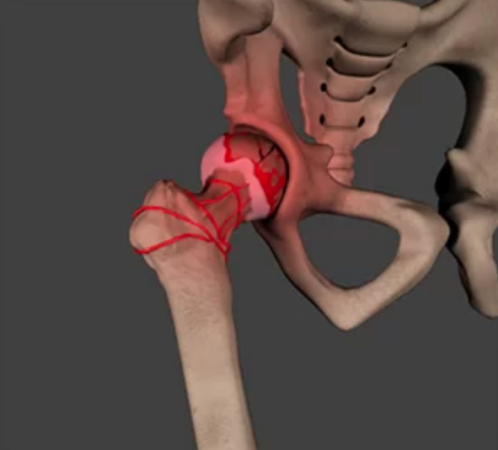
Bone aches that come and go periodically and joints that are rigid make standing and moving together difficult. Avascular necrosis may be the cause of problems. Learn about this issue's causes, symptoms, treatments, and prevention from the experts by coming in. in order to allow you to live a healthy life and receive treatment for this illness in a timely manner.
Avascular necrosis is a bone disease in which the production of new bone tissue stops and the blood flow to the bones is either interrupted or stops entirely. Many symptoms, such as sporadic bone pain, joint stiffness, and difficulty walking and standing, are typically present in those who have this disease.
What causes the problem of avascular necrosis?
There are many causes of avascular necrosis (AVN). Injury, excessive alcohol or tobacco use, the use of steroids, and specific health issues like blood disorders, cancer, HIV, and rheumatoid arthritis are among them. In addition to this, chemotherapy and radiation therapy can also cause the AVN issue.
The disease, AVN, spreads gradually. However, there are some steps one can take to lessen the likelihood of it happening. Avoid smoking and taking steroids, control your cholesterol, and avoid drinking alcohol to avoid this.
Can excessive use of alcohol and steroids increase the risk of avascular necrosis?
According to Dr. Manish Maheshwari, an orthopedic surgeon at Shalby Hospital in Indore who holds the degrees of MBBS, D Ortho, and MS Ortho (USAIM), excessive alcohol consumption over an extended period of time can cause AVN of the femur head. Alcohol consumption can cause hyperlipidemia, which triggers the body's rapid growth of fatty cells. An increase in blood fat levels can clog the arteries as a result. Reduced blood flow causes damage to the upper portion of the femur, which can result in issues like aseptic necrosis or cell death. Additionally, there is an increase in adipocytes, or fat cells, in the upper end of the femur. This causes the pressure inside the femur head to rise, which negatively impacts blood flow.
How can avascular necrosis be treated?
Treatment options for femoral head avascular necrosis (AVN) range from conservative measures to surgery. However, doctors make that decision solely based on the patient's age, the degree of their pain, and whether or not they already have any diseases. In two to three years, a subchondral fracture may develop if AVN is not treated promptly.
The traditional approach to treating this condition is nonoperative, and it entails targeted medication therapy, physical therapy, weight loss, abstinence from alcohol, and discontinuation of steroid therapy. However, each patient responds to conventional treatment in a different way.
Surgery patients are categorized as either joint reconstructive or joint preservation. Core decompression, bone grafting, biologic and cellular therapy, and osteotomy are examples of joint preservation techniques. The technique of realigning the bones is used in joint replacement, however.
Osteonecrosis is frequently treated with core decompression techniques.
In the vicinity of the dead bone area, surgical drilling is performed. This method aids in boosting blood flow and slowing or halting bone loss. There are some restrictions on all of these treatment options.
How to Stay Hygienic During Cold and Flu Season: Tips to Prevent Illness
From period cramps to hair growth, rice water has many amazing benefits
Achieving a Radiant Holiday Glow: Skincare Tips for the Festive Season